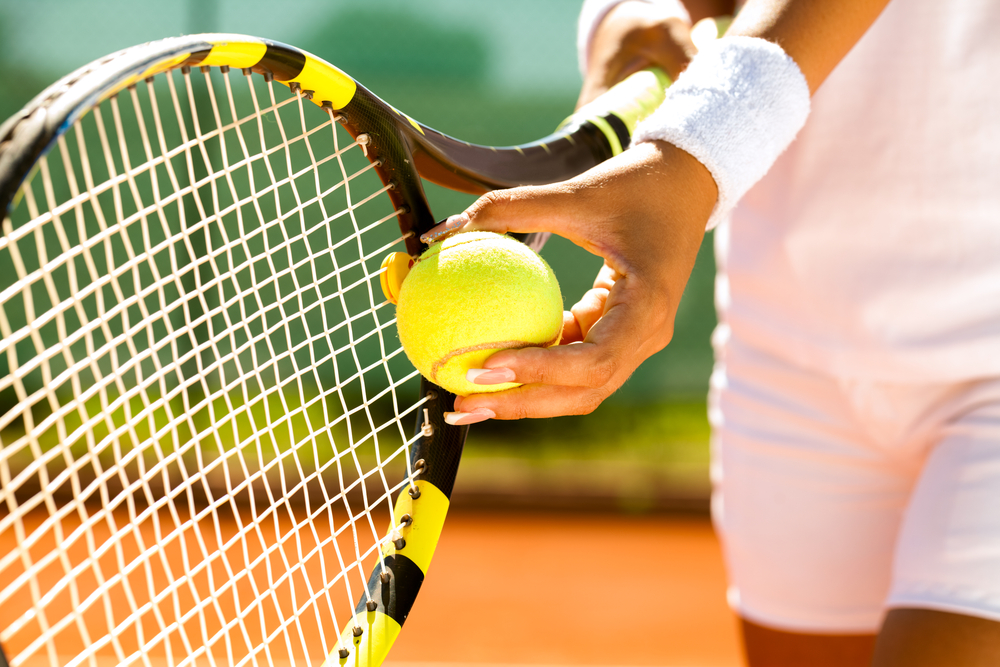Tennis Elbow and Beyond: A Closer Look at Tennis Injuries
 The 2014 US Open starts today. One of the major stories prior to the start of the tournament is that Rafael Nadal is sitting this one out due to injury. At only 28, Nadal has already won 14 Grand Slam singles titles but his aggressive playing style has taken a toll on his body. Nadal has suffered from many different injuries -- mostly to his knee and wrist -- over his career; this is the fifth tournament in his career where he has been sidelined due to injury. It leads many to wonder if Nadal would be the greatest tennis player of all time if he could only get his body to cooperate.
The 2014 US Open starts today. One of the major stories prior to the start of the tournament is that Rafael Nadal is sitting this one out due to injury. At only 28, Nadal has already won 14 Grand Slam singles titles but his aggressive playing style has taken a toll on his body. Nadal has suffered from many different injuries -- mostly to his knee and wrist -- over his career; this is the fifth tournament in his career where he has been sidelined due to injury. It leads many to wonder if Nadal would be the greatest tennis player of all time if he could only get his body to cooperate.
Whether you are a professional tennis player or you play for fun, injuries can always occur and ruin your game. In honor of the US Open, let's take a closer look at tennis injuries and how they can be prevented.
Common Tennis Injuries
Overuse is the most common reason for tennis related injuries. Approximately two-thirds of all tennis injuries occur because of overuse. The other third is due to sudden injury or an acute event.
Tennis Elbow
You know an injury is common when it is named after the sport where it frequently occurs. Lateral epicondylitis or tennis elbow, is a strain of the muscles and tendons in the elbow through repetitive motions. Tennis players can get tennis elbow by practicing their backhand swing repeatedly.
Shoulder Injuries
Swinging a tennis racket and firing off a powerful shot can put a great deal of stress on your shoulders. Tennis players often suffer from shoulder injuries.
Rotator cuff injuries are common. The rotator cuff helps position your shoulder in the socket. If you have a weak rotator cuff, it can cause irritation in the socket tissues as it moves around. This can lead to inflammation in the tendon or the bursa (Shoulder Bursitis), causing pain when you swing your racket overhead.
Lower Limb Injuries
Tennis is a full body workout and players must sprint from one side of the court to the other. The sudden pivot as a player takes off can put stress on the knee joints, tendons and ligaments resulting in knee injuries.
Any sport that requires running has the risk of ankle injuries. A sprained ankle is one of the most common tennis injuries. Even the greats like Roger Federer and Andrew Murray have suffered sprained ankles.
Preventing Tennis Injuries
With any sport, proper training and condition is crucial to injury prevention. This means warming up before a match as well as maintaining your fitness even in the offseason. Tennis is a fast paced sport that requires not just muscle strength but also endurance. You need to be able to sprint back and forth, backwards and forwards, throughout the match.
When strength training, focus on the shoulder muscles to help prevent rotator cuff injuries. Strengthen and stretch the wrist and forearm muscles to prevent tennis elbow, as these tend to absorb the most impact from the ball hitting your racket. Work on your core and back to further reduce the chance of injury.
For tennis, technique is extremely important not just to win but also to extend your career by reducing the risk of injury. Make sure you have the proper form for each type of swing. That said; try not to repeat the same swing too many times in a row. Mixing it up helps prevent overuse injuries but is also more in line with how a match will be played.
In addition, make sure you have the right equipment. Pay attention to the grip size of your racket. Make sure your footwear is supportive. If you are experiencing even minor pain, consider taping the area or wearing a brace for added support.
Sources:
http://www.stopsportsinjuries.org/tennis-injury-prevention.aspx
http://www.physioworks.com.au/Injuries-Conditions/Activities/tennis-injuries




